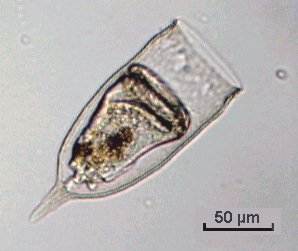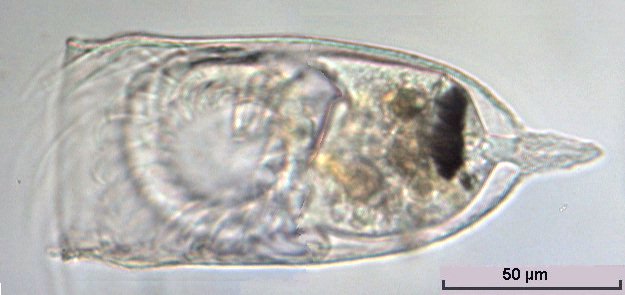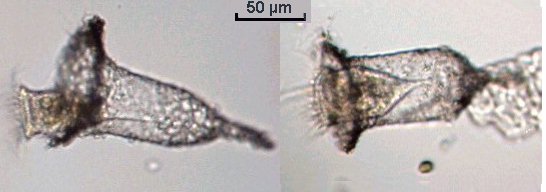To begin, the pictures above show the most likely encountered familly: Favella; the individuals are shown retracted inside their house or in a feeding posture. All pictures were taken with a 15x objective.
The unusual picture (below, and the only one I have observed), shows a favella which is dividing with the new individual (the upper one) still attached to its parent. Both were living specimens with cilia moving rapidly. 
Others, like those in the pictures below, look like shelled amoeba i.e. within a house of dark material. It's probably Codonaria; the first picture clearly shows the protozoan's cilia, so it is not an amoeba! The right-hand picture shows the well agglomerated structure of the lorica. They move rapidly too. 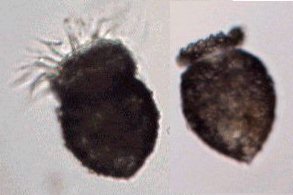 
Another species (below) with an open bottom lorica (the protozoan is fastened to the lorica wall); species uncertain. Inside the body you can observe many round green algae. 

Two empty loricas from other species (below); the right-hand species is perhaps Metacyclis.  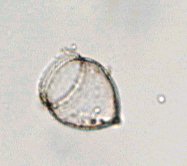 The Tintinninae seem very sensitive to salt concentration on the slide. If the sea water evaporates a little, the protozoan literally explodes within its lorica. Empty loricas can be mounted in glycerin gelly for example. Be cautious with those species with loricas of agglomerate material, because they are delicate (as are some testate amoeba shells), and they are crushed easily by the weight of a coverslip.
Microscopy
UK Front Page
All photographs © Jean-Marie Cavanihac 2002 Published in the September 2002 edition of Micscape Magazine. Please report any Web problems or offer general comments to the Micscape Editor. Micscape is the on-line monthly magazine of the Microscopy
UK web
WIDTH=1 |
